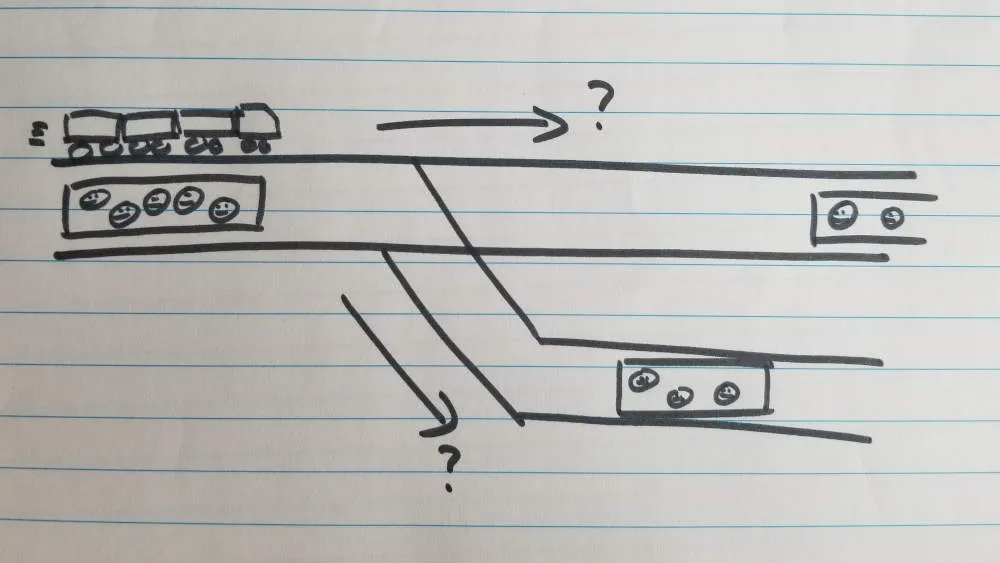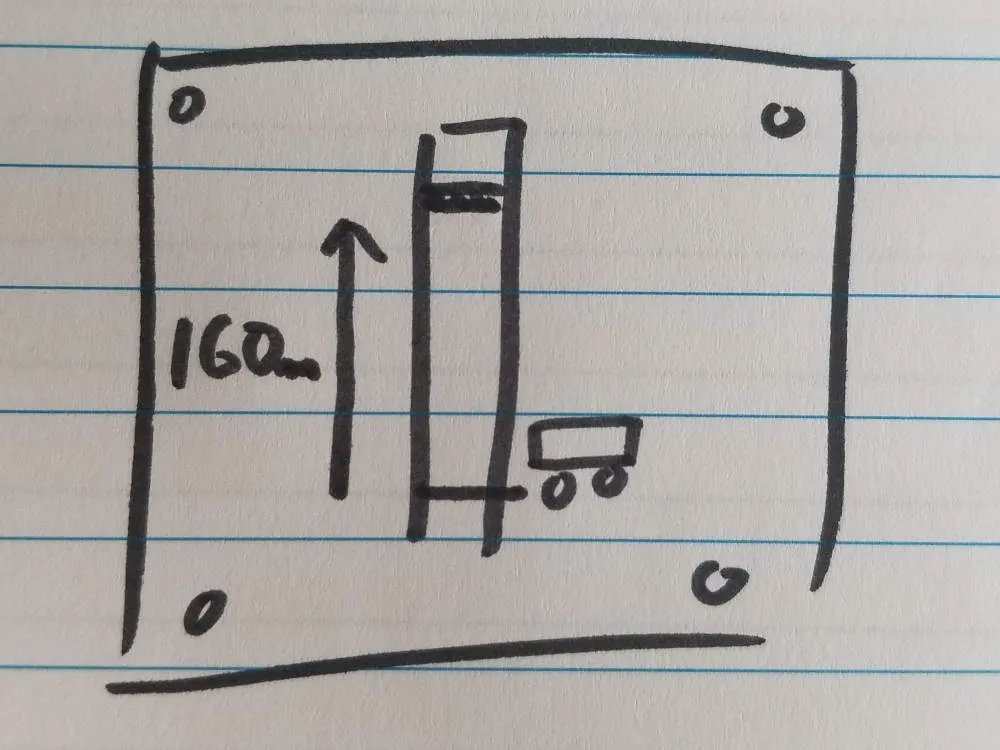How trains know when and where to go
Written by Chris, updated Sep 15 2019 in accordance with our editorial policy.
Trains are told when and where to go thanks to the signalling system and the timetable. The signalling system sets routes for trains to follow on a line, and makes sure the trains don’t hit each other. Timetables are calculated to best serve the train’s customers while also considering positioning of the crew and the positioning of the trains.
 Signalling systems direct trains on which route to take
Signalling systems direct trains on which route to take
How trains know where to go
Trains are told where to go mostly by their timetable. On most of the track I’ve worked with, it’s the timetable that tells a train which line to travel on, which stations to stop at, and which paths to take.
Occasionally I’ve seen some small changes to the route a train takes between stations. These are rare as most of the lines I’ve worked on do not have the options for trains to take different paths. The command to take a different path comes from train controllers sitting inside the Operations Control Centre.
The signalling system is used to direct a train on to a particular route. A train follows set routes along the tracks, with the signalling system often used to communicate these routes to the driver. If the train is driven by a human, it is expected the human possesses a lot of knowledge about the route, such as what speed to be travelling at. In systems where humans drive the train, the signalling system usually confirms the direction to the driver, and indicates that there is no train on the route ahead so it is safe to proceed.
On lines where trains are driven by computer, the signalling system has much more authority in determining where the train goes. On the driverless systems I’ve worked with, the signalling system will set the route for the train to follow, then command the train to travel that route, at what speed the train is to travel at, and how far the train can travel before stopping. As the train is travelling the route, the automated signalling system can keep in constant contact with the train, updating it on how further far forward it is allowed to travel.
How trains know when to go
Trains are told when to go by their timetable.
The timetable tells trains when they should go, a signalling system can prevent them from departing until it is safe to do so.
In trains systems I’ve seen that still rely on a human driver, the signalling system only tells the driver when the train can move and not when the train should move. It is up to the driver in these traditional signalling systems to decide when to move the train.
In driverless systems I’ve worked with, the signalling system also commands the train to move; the signalling system tells the train when to go. One part of the signalling system, called ATO (Automatic Train Operation), tells the train when to go and how fast to drive. Another part of the signalling system, called ATP (Automatic Train Protection), makes sure the train is not moving in an unsafe way - either by speeding or by moving onto a section of track that isn’t safe.
I wrote recently about how signalling works and how trains drive themselves, check it out here: https://econstructioncareers.com/news-insight/rail-signalling
Who sets the timetable
In the more modern systems I’ve worked with, the timetable is calculated by a computer. The computer can simulate the operation of the train network and determine what time trains have to be at what location to run the service. This timetable can then be used to plan crew rosters and movements.
I’ve also worked with more old-fashioned systems that still rely on people to manually set the timetable, and to check that timetable for conflicts. This is a time consuming task and timetable changes on these lines are rare. Thankfully timetables don’t often need to be changed once they’re established.
How do trains know how fast to go
Every train line I’ve seen has a designed maximum speed for each type of train that will run on the line. This speed is calculated based on the curves and gradients of the line, and the signalling system that’s being used.
Tighter curves and steeper gradients mean slower speeds. Some parts of the line might require certain types of train to slow down, these parts are marked with speed signs. Signalling systems are designed to prevent trains crashing; some lines I’ve worked on limit the speed of trains so that they can comply with the signals and stop their trains before reaching unsafe sections of line.
Train drivers must know the maximum speed for their trains, and then drive according to that speed. This is part of the route knowledge that a train driver must learn in their training. Train drivers must acquire this route knowledge through practice and supervision before being fully qualified to drive on a particular train line.
Driverless systems I’ve worked with can tell the train how fast to drive. Separate systems tell the train how fast it can go and when the train is going too fast. The independence of these systems helps demonstrate safe operation of a train. If the train speeds up too much going down a hill, the automatic protection system (ATP) will force on the train’s brakes.
Why do trains randomly stop in the middle of nowhere
Trains often stop between stations or seemingly in the middle of nowhere; in my experience this is typically due another train blocking the path ahead.
The train ahead blocking the path might be:
- An express train or freight train that other trains have to wait for,
- Stuck at the next station, and your train is in queue waiting for the platform, or
- Slow moving, trains can only pass each other at certain points, and other trains can build up behind a slow one.
The signalling system stops the train while there is a conflict in this paths, or routes, so that the train waits until it is safe to proceed. Signalling aims to make sure two trains do not collide.
How trains stop exactly at the right spot on a platform
A train driver manually driving a train typically knows where to stop the train thanks to a marker on the platform or track. By stopping at the marker, the driver knows all the doors will line up. I recently saw a new train though that had a distance to go indicator for the driver, telling the driver how much further the train needs to travel to ensure it lines up correctly on the platform.
Having a computer calculate the distance and speed required to stop the train at the right spot is usually a feature I include when designing driverless train systems. A series of beacons on the track are read by the train as it passes over the top, giving the train computer an indication of where it is. The train can use this information, and its built in odometer, to calculate the exact right position to stop so that all doors line up correctly and consistently.
 What a train driver can see approaching to platform - Distance To Go Indicator
What a train driver can see approaching to platform - Distance To Go Indicator
If signalling can automate train operation, what jobs are there for people?
I’m a great believer in the potential of infrastructure jobs. Building and maintaining train lines is a meaningful and rewarding career. While driverless train systems don’t need a person driving the train, they do still need people to look after the infrastructure and equipment.
Maintenance engineers & technicians are the people responsible for keeping the trains running. These people look after the track, the signals, the trains themselves, and all the other supporting rail systems that keep passengers and freight moving.
Trains go where they’re told and when they’re told. The timetable and the signalling system give the trains this information.
Related articles:
- Rail systems is a term used to describe the various electrical, mechanical, and even people-operating systems that keep trains running. I wrote a better description of rail systems here: https://econstructioncareers.com/news-insight/rail-systems-visual-guide
- Self-driving trains are becoming more common, but that doesn’t mean humans are becoming obsolete. I see plenty of opportunities for humans to help run a rail network, check out why here: https://econstructioncareers.com/news-insight/how-automatic-train-control-works